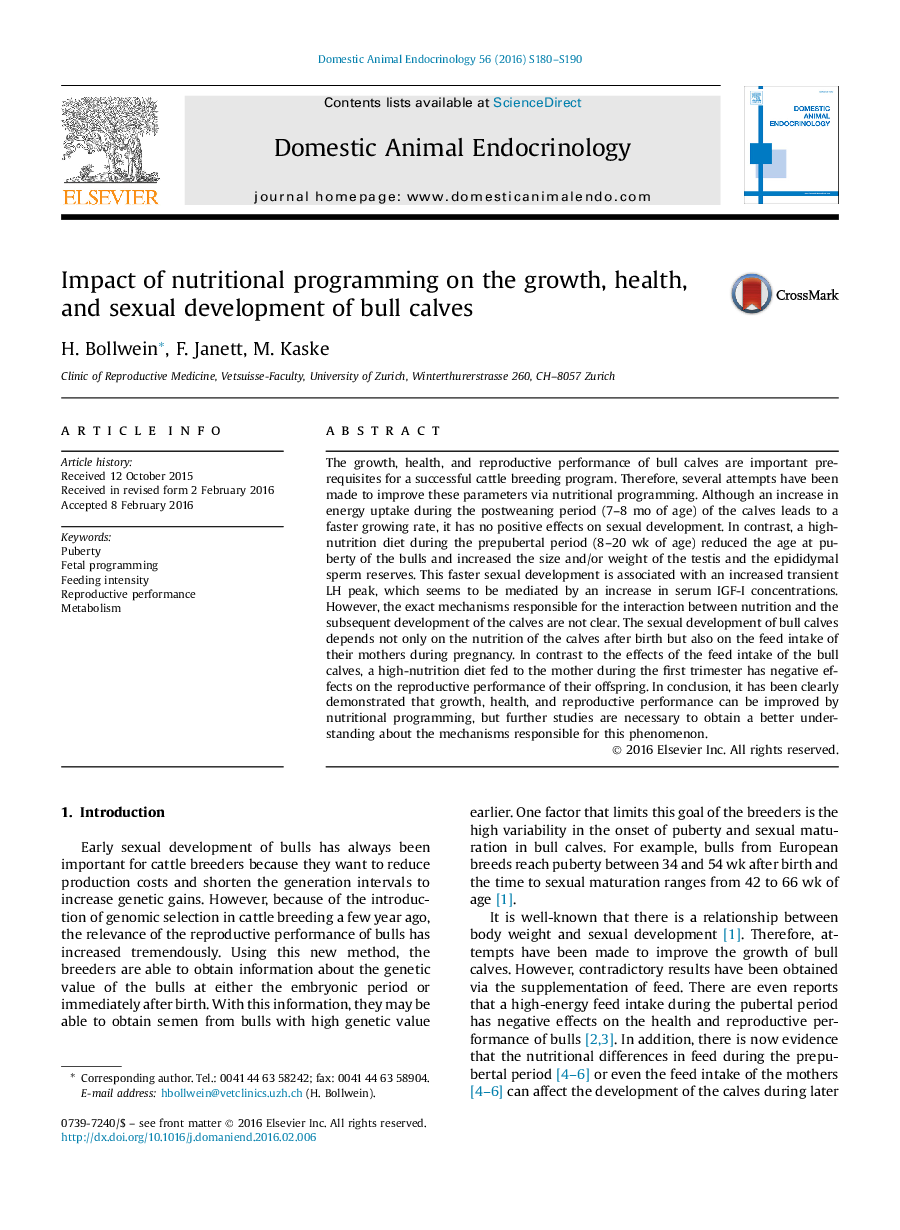| کد مقاله | کد نشریه | سال انتشار | مقاله انگلیسی | نسخه تمام متن |
|---|---|---|---|---|
| 10961155 | 1101316 | 2016 | 11 صفحه PDF | دانلود رایگان |
عنوان انگلیسی مقاله ISI
Impact of nutritional programming on the growth, health, and sexual development of bull calves
ترجمه فارسی عنوان
تأثیر برنامه ریزی تغذیه ای بر رشد، سلامت و رشد جنسی گوساله ها
دانلود مقاله + سفارش ترجمه
دانلود مقاله ISI انگلیسی
رایگان برای ایرانیان
کلمات کلیدی
بلوغ، برنامه ریزی جنینی، شدت تغذیه، عملکرد تولید مثل، متابولیسم،
موضوعات مرتبط
علوم زیستی و بیوفناوری
علوم کشاورزی و بیولوژیک
علوم دامی و جانورشناسی
چکیده انگلیسی
The growth, health, and reproductive performance of bull calves are important prerequisites for a successful cattle breeding program. Therefore, several attempts have been made to improve these parameters via nutritional programming. Although an increase in energy uptake during the postweaning period (7-8Â mo of age) of the calves leads to a faster growing rate, it has no positive effects on sexual development. In contrast, a high-nutrition diet during the prepubertal period (8-20Â wk of age) reduced the age at puberty of the bulls and increased the size and/or weight of the testis and the epididymal sperm reserves. This faster sexual development is associated with an increased transient LH peak, which seems to be mediated by an increase in serum IGF-I concentrations. However, the exact mechanisms responsible for the interaction between nutrition and the subsequent development of the calves are not clear. The sexual development of bull calves depends not only on the nutrition of the calves after birth but also on the feed intake of their mothers during pregnancy. In contrast to the effects of the feed intake of the bull calves, a high-nutrition diet fed to the mother during the first trimester has negative effects on the reproductive performance of their offspring. In conclusion, it has been clearly demonstrated that growth, health, and reproductive performance can be improved by nutritional programming, but further studies are necessary to obtain a better understanding about the mechanisms responsible for this phenomenon.
ناشر
Database: Elsevier - ScienceDirect (ساینس دایرکت)
Journal: Domestic Animal Endocrinology - Volume 56, Supplement, July 2016, Pages S180-S190
Journal: Domestic Animal Endocrinology - Volume 56, Supplement, July 2016, Pages S180-S190
نویسندگان
H. Bollwein, F. Janett, M. Kaske,
